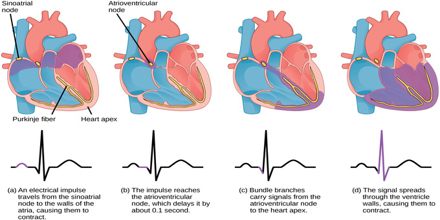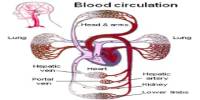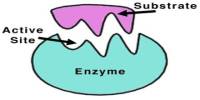General purpose of this lecture is to describe how heart action is coordinated with reference to the sinoatrial node (SAN), the atrioventricular node (AVN) and the Purkyne tissue. By this lecture you will be able to interpret and explain electrocardiogram (ECG) traces, with reference to normal and abnormal heart activity. The heart is made of cardiac muscle. When the cells receive an electrical impulse they contract – causing a heartbeat. Cardiac muscle is myogenic – it can contract on its own, without needing nerve impulses.
Co-ordination of Cardiac Cycle
















